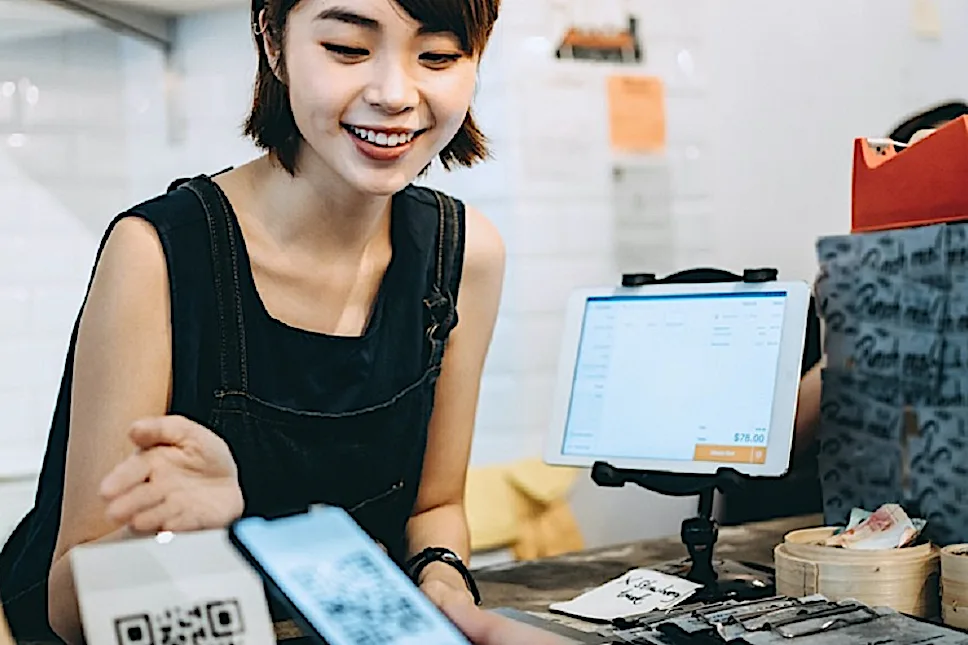Price versus provenance: How do eggs from different countries stack up?

SINGAPORE – With eggs from Brunei cracking their way into FairPrice supermarkets two weeks ago, the chain now carries eggs from 10 countries.
Those from the region include Malaysia and Thailand, along with some from far-flung locations such as Ukraine and Denmark.
In Singapore, fresh eggs come from 17 countries – including Japan, Ireland and Australia – up from 12 countries in 2019, as part of diversification of food sourcing efforts.
Which gives you the most bang for your buck?
A comparison of egg prices from 10 countries across different retailers showed that eggs imported from Europe were the most expensive – costing more than $1 each. The outlier is war-torn Ukraine’s eggs, which – at 32 cents an egg – cost the same as those from Brunei and comparable with those from farms in the region.
Brisk egg sales
At FairPrice supermarkets, the top three sources of eggs are from Singapore, Malaysia and Thailand, which make up 98 per cent of total egg sales, says Mr Tng Ah Yiam, FairPrice Group’s chief procurement officer.
The supermarket’s eggs are classified into two categories – basic and functional. Basic eggs, those with no added benefits and typically costing 26 to 36 cents each, make up more than half the total sales. Functional eggs, which refer to those that have added nutritional value such as vitamins and Omega-3 fatty acids, cost around 40 cents an egg.
Sales of the Brunei eggs have been encouraging, says Mr Tng, adding that these present another budget option, as egg suppliers worldwide hike up prices because of soaring chicken feed costs and surging transport and energy costs.

In Singapore, the average price of eggs in January 2023 hit a high of $3.39 for a box of 10, according to economic data research firm CEIC. In January 2010, a pack of 10 eggs cost $2.10. Pre-pandemic, in 2019, prices hovered around $2.40. Now, a pack of 10 entry-level Pasar eggs at FairPrice costs $3.20.
In March 2022, The Straits Times reported that a tray of 30 eggs at FairPrice cost $7.20 – up by $1 from the previous month. Now, it costs $7.85.
Egg prices have been surging globally, with a dozen organic eggs in the United States reportedly hitting US$18 (S$24) because of bird flu. In New Zealand, a ban on battery cages since Jan 1 sparked an egg shortage as producers scrambled to meet demand, while avian flu infections and temperature fluctuation in recent months have also caused shortages in Taiwan. In Japan, egg prices have surged 86 per cent from a year earlier to an all-time high.
To meet demand here, FairPrice imports 200,000 eggs a week via egg importer and wholesaler Dasoon. The wholesaler’s director Sng Kaijun is looking to double the number of eggs imported here.
The majority of eggs brought in by Dasoon are from Malaysia, but the company also supplies eggs from Thailand and Poland, which entered the Singapore market in 2020. However, Mr Sng says that Polish eggs are currently unavailable due to price issues.

Eggs from Singapore, Malaysia and New Zealand are the top three sources at the supermarkets under the DFI Retail Group, which runs the Cold Storage and Giant chains.
The group’s spokesman says its bestsellers are the more basic eggs as well as Omega-3-enriched ones that cost 45 cents each. Its Meadows housebrand of cage-free, free-range and organic eggs, which cost upwards of 85 cents each, are also popular. In April, the group will launch plant-based eggs and free-range eggs from New Zealand at its Cold Storage outlets.
At e-grocer RedMart, which carries a range of eggs from countries including Malaysia, Ireland and Australia, the surge in demand for eggs – when people were dining at home more during the pandemic – has normalised over the past nine months.
A spokesman for Lazada, which runs RedMart, says: “The normalisation can be attributed to the loosening of pandemic restrictions, leading to customers cooking and eating less at home. There was an uptick in January due to the Chinese New Year festivities.”
Price over provenance?

But with egg prices rising, what should you be putting in your basket? Does provenance matter?
A closer examination of the basic eggs by brand chef Edmund Tay of the Tamago-En restaurant chain, which specialises in egg dishes, showed that provenance does not matter much when it comes to the taste and appearance of an egg.
Out of 20 eggs put to the test from 10 countries, those from Singapore stood out for being noticeably fresher – likely because they did not have to be shipped in from afar.
But hawkers and restaurant chain owners say they are sticking to the familiar, tried and tested, even if egg costs surge further. Many also feel that taste-wise, swopping out a local egg for an overseas import would not make a difference to diners.
Mr Melvin Chew, 44, who runs braised duck stall Jin Ji Teochew Braised Duck and Kway Chap in Chinatown, uses a mix of Malaysia and Singapore eggs from his supplier.
He picks bigger-sized eggs, those weighing 60g and above, that “look prettier” as his menu features ramen-style eggs with a gooey yolk. They cost $8.30 for a tray of 30, about 90 cents more than eggs of a smaller size.
He has tried eggs from Ukraine before, which were slightly cheaper than local ones, but was put off by the inconsistent supply.
He says: “Hawkers selling char kway teow and fried carrot cake would usually use small eggs, since diners cannot tell the difference, and they would want to save cost.
“The big ones can be very costly and prices can change any time. We have also lost track of the rising prices.”
Mr Lester Li, 25, founder of the King of Fried Rice chain of hawker stalls specialising in fried rice uses Malaysian eggs – about 1,000 trays of 30 eggs a day across his 34 outlets. Each plate of fried rice uses two eggs.
While he declines to reveal the cost of his eggs, he notes that prices have increased sharply. However, he has not switched sources because of the “smooth working relationship” with his supplier. “We will not change to cheaper sources if it compromises the quality and taste of our fried rice,” he says.
Similarly, Ms Chris Ho, the 60-year-old chief baker of home-based business Flash Bakes which specialises in egg tarts, will consider switching to other egg sources only if they do not affect the taste of her bakes.
She gets about 750 Polish eggs a week from a wholesale egg supplier and has not faced supply disruption issues. It now costs her about 50 cents an egg, but she is sticking to her source. Her regular egg tarts are priced from $2.60 for two.
She says: “As a small business, we probably should consider more cost-effective options since eggs are our main ingredient. But we have tried many different brands and eggs from various sources and our customers always give feedback that those are not as good as what we are using now.
“As a consumer, however, I would use local eggs for my personal consumption and cooking.”
Egg examination and taste test

Although there are more egg sources to choose from, does it really matter where your egg is from and how many miles it has travelled to reach you?
To find out, The Straits Times picks five affordable eggs from five countries that would work best for home cooks on a budget, and ropes in brand chef Edmund Tay, 30, of egg-centric restaurant chain Tamago-En.
He is known as an eggs-pert, as his chain’s seven outlets use up to 400 eggs from Okinawa a day, whipping up dishes such as beef omurice, prawn pasta topped with onsen egg and souffle pancakes.
For the blind taste test, the cheapest available eggs from Singapore, Malaysia, Thailand, Ukraine and Brunei are used. They are priced between 25 and 34 cents an egg at supermarkets.

First, to test the freshness of the eggs, Mr Tay places them in a container of water.
All of them sink, with the base of each egg touching the bottom, which leads Mr Tay to deduce that the eggs are about one week old. Those that descend and lay fully flat at the base are the freshest, about one to two days old.
The only egg with a white shell is from Ukraine, while the rest are brown.
An eggshell’s colour depends on the breed of chicken that lay it, says Mr Tay. Those with white feathers and ear lobes lay white eggs, while those with red feathers and ear lobes lay brown eggs.
The yolks of the eggs from Singapore and Thailand have a more orangey hue, compared with the yellowish yolks of the other three. The appearance does not affect nutrition levels.

However, Mr Tay says: “Its feed can affect the colour of the yolk.” For example, broccoli leaves and corn added into the chicken feed impart an orangey hue.
The eggs from Singapore farms stand out for being the freshest, possibly because they did not have to fly too far from the coop to get here. While the Little Red Dot produces yolks on the smaller side, Mr Tay points out that these have a “bouncier”, more dome-like surface, especially when presented raw, with a thicker ring of albumen protecting the yolk.
These egg whites from Singapore would also be the best for whipping up meringues, as they stay stiffer for longer, he adds. Runnier egg whites take a longer time to whisk and the meringue could deflate quickly.
A second set of eggs is cooked sunny-side-up for tasting, and Mr Tay notes no remarkable difference in flavour. While the cooked Singapore egg yolk this time presents as more yellow, after time on the stove, the egg yolk from Thailand remains consistently orange.
In a pack of eggs, Mr Tay says, some could be from different batches, which could lead to slight differences in looks, size and weight.
Overall, he concludes that the eggs’ provenance did not greatly affect their taste, appearance or nutrition.
But he says consumers should pay attention to the Best Before date, especially if they are planning to use the eggs in baking. His advice is to keep eggs in the refrigerator to prolong their freshness.
“Eggs that are closer to their expiration date are still good to eat, but they may not be as fresh and can start to smell a bit off,” he adds.
Join ST's Telegram channel and get the latest breaking news delivered to you.





No comments:
Post a Comment